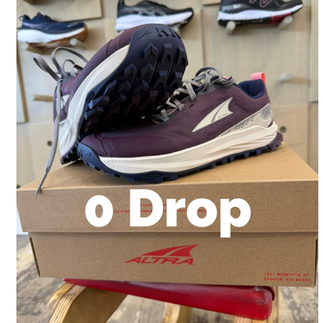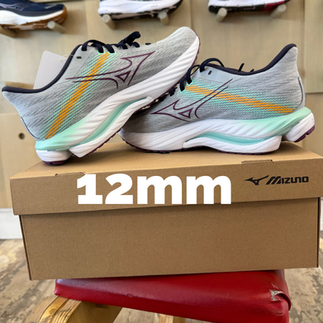Don’t Let Your Achilles Hold You Back
- Dayna Player Robinson

- Oct 21
- 4 min read

When Your Achilles Start Talking: Mileage Increases, Tendon Health, and Smart Adjustments
I got a message from one of my athletes recently that said:
This is such a great question — and one that almost every runner faces when they start building mileage.
Achilles pain isn’t just about doing “too much too soon.”
It’s often your body’s way of saying, “Hey, give my tendons a little more support while you’re getting stronger.”
Let’s unpack what’s going on and what to do about it.
Achilles pain can affect runners in several key ways:
1. Reduced Power and Efficiency
The Achilles tendon stores and releases energy with each step—acting like a spring that helps propel you forward. When it’s irritated or inflamed, you lose that “elastic recoil,” meaning your stride feels heavier and less snappy. You might notice slower paces at the same effort or feel like you’re working harder than usual.
2. Altered Running Mechanics
To avoid pain, many runners subconsciously change how they move—landing flatter, shortening stride, or overloading the opposite leg. This can create a chain reaction of issues, from calf and knee pain to hip or lower-back tightness.
Might just be time for a Running Assessment!?!
3. Limited Training Progress
Achilles discomfort often flares up with increased volume or speed work, both of which are essential for building race fitness. Left unchecked, that mild ache can turn into tendinopathy, forcing you to scale back mileage, skip workouts, or even take time off completely.
Might just be time to give up on your generic training plan & to hire a run coach?!?
4. Inflammation and Morning Stiffness
A hallmark sign of Achilles issues is stiffness or pain when getting out of bed. This happens because tendons tighten overnight when they’re not under load. It’s a reminder that your tendon needs both rest and progressive loading—complete rest tends to make it stiffer, while smart, controlled movement improves it.
Might just be time for a rest day or three.
5. The “Weak Link” Effect
If your calf and glute strength can’t keep up with your running volume, your Achilles absorbs extra load. Over time, this microstrain leads to tiny tears and inflammation. That’s why eccentric calf raises, single-leg balance work, and light plyometrics (like hops or skips) are key for long-term tendon health.
Might just be time to add plyometrics to your trianing.
Tendons Love Load… but They Hate Surprises
Tendons (like your Achilles) don’t actually want rest — they want controlled load. The Achilles is made to store and release energy like a spring. When you suddenly add mileage or intensity, that spring gets stretched in ways it’s not ready for. The fix isn’t stopping—it’s smart strength and gradual progression.
Here’s what helps:
Eccentric strength work: Think heel drops off a step, controlled and slow.
Isometrics: Holding a calf raise mid-way for 30–45 seconds builds tendon tolerance.
Plyometrics: Light hops, skips, and jumps once tendons are calm. This is how tendons regain elasticity and shock absorption.
All of my online strength programs include a plyometric component for this exact reason — not just to help you run faster, but to keep your tendons resilient over time.
Check Your Heel Drop
If your Achilles are barking, shoe choice can make a big difference.
A low heel drop (6mm or less) means your heel sits closer to the ground. That’s great for some runners, but if your Achilles are tight or sore, that extra stretch can overload the tendon.
Try shoes with a higher heel drop (8–10mm) temporarily — it can ease strain on the Achilles while things calm down.
On the flip side, if you’re dealing with knee pain, the opposite applies: too high a heel drop can shift more load to the knees. For cranky knees, something under 6mm might actually feel better. BUT only if you have the ankle mobility for that!
The key is to adjust based on what’s talking —
Achilles = higher drop,
Knees = lower drop *but only if you have the ankle mobility.
Women, Tendons, and Hormones
Extra tip for the girls - During low-estrogen phases (like peri-menopause or the low-hormone phase of the menstrual cycle), tendons are actually more vulnerable to microstrain and slower recovery.
The take-home advice is to train tendons consistently, not reactively. Strength and plyometric work are your long-term insurance policy for joint and tendon health.
Putting It All Together
If you’re building toward a half marathon like my athlete in Hawaii, here’s your plan of action:
Increase mileage gradually — no more than 10% per week for your long run.
Strength train twice a week, emphasizing calves, glutes, and single-leg stability.
Include plyos (mini hops, skips, or bounds) 1–2 times weekly.
Adjust your shoes — don’t ignore heel drop.
Listen early — a little Achilles stiffness that warms up is okay; pain that worsens as you run is your red flag to dial back.
Bottom Line
Your Achilles aren’t a problem — they’re just your body’s way of reminding you that tendon health needs time under tension and consistent strength. With the right progressions, you’ll not only be pain-free but springier and faster than ever by race day.
If you’re unsure where to start, both of my online strength programs include guided plyometric progressions and tendon-friendly training blocks to help you build durability — not just mileage.
Achilles Heel? More Like Achilles Heal!
Happy Healthy Running
- from your favorite Exercise Physiologist, Dayna
Want more help?
Our all have your strength program inlcude plyometeric work - to hel all areas of the foot and ankle that play a key role in Achilles pain! Click to learn more.
If you need help with your running, our Running Assessment has all the tools for you! Muscle imbalance testing, form help for injury prevention and performance goals, and 8-weeks of personalized strength exercises.
Other programs to help you
Join our Running Workshop here!
Or
Learn how you can run more efficiently Running Assessment
Or
Get your FREE Strength Assessment here!
Or
Join our online 12-week strength program here!























Comments